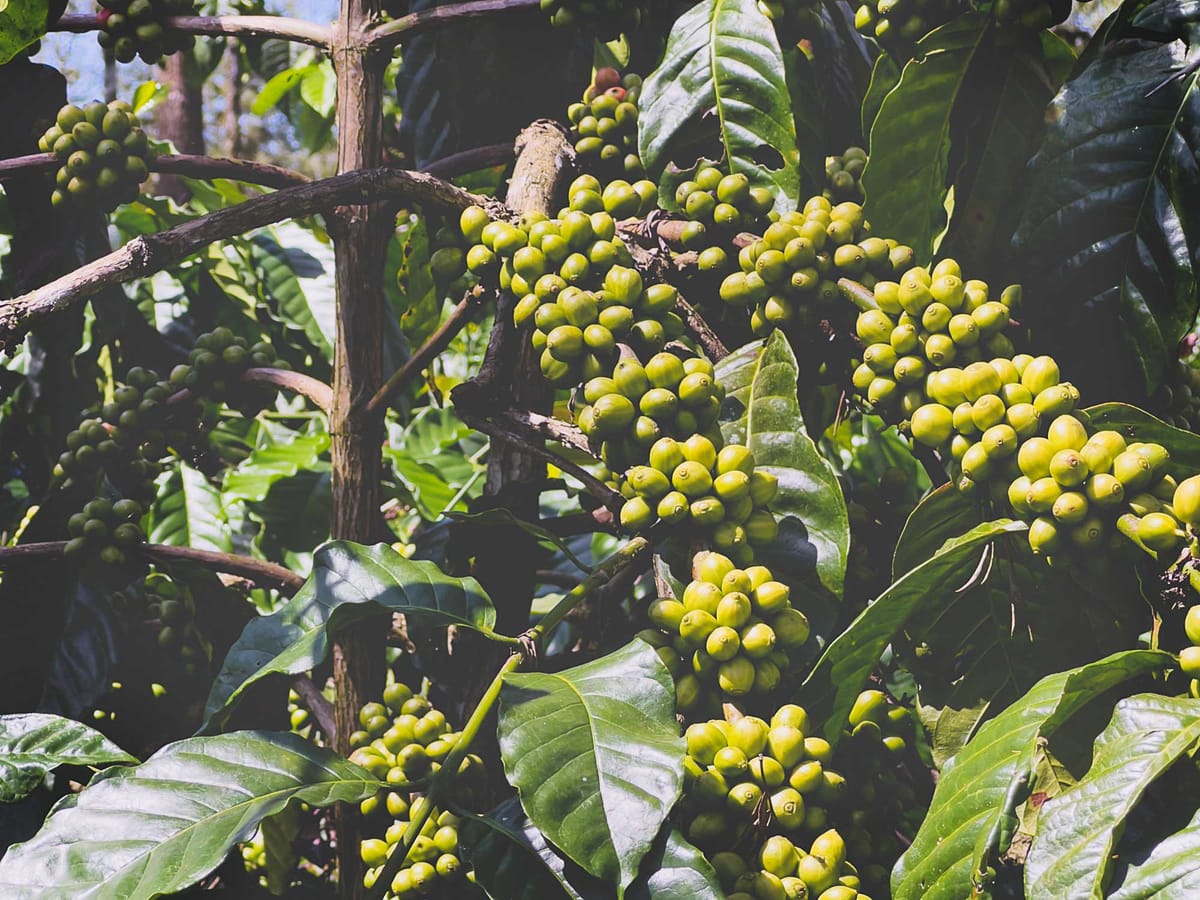You Sow What You Reap. Really?
The gods decide if a bean will make it to somebody’s gut or if it will merely rot in the soil that sprouted it.

It has been raining daily. Rain at this time in this intensity is good (or at least not bad) for the robusta and for cardamom, but it is killing the arabica. This is November, and I am thinking back to last December when downpours threatened to destroy robusta and arabica. We struggled to save our crop.
We have planted cardamom this year on our plantation, four varieties of it, two months ago. The inspiration for it came from a visit to Dharmaraj’s plantation mid-year this year. Dharmaraj is a highly respected planter and advises us (for free, as a friend) on how to run our plantation. It is two years since he began cultivating cardamom, and he has begun harvesting it on a scale that has stunned the scientists at the Spices Board. “Your results will surpass mine,” he says about our cardamom patches, which were planted and are maintained under his guidance.
He is helping us with the spice as he helped us with coffee over the last three years. He took on our underperforming asset and, together with us, turned it into a respectable estate hereabouts.
Walking with us on our plantation last fortnight, he stopped and broke off the end of a coffee branch. It had shiny, supple shoots on the tip. “See?” he said. Despite their apparent health, the leaves were drooping somewhat. “Shot-hole borer,” he said, cleaving the supple green branch with his thumbnail, tearing it apart. He located a borer, dark and tinier than the tick on a dog. Borers had laid eggs along the sieve, blocking vital sap from flowing to the shoots on the branch tip.
I thought of all the things the plant was invested with: four rounds of fertiliser with a fifth to come in two weeks, lime, micronutrients, so much water — all just this year, on top of all that has gone into it for years — now to be laid waste by an organism that you’ve to strain your eyes to see, which you can squish to nothing between two fingers. Like the powdery mealybug that is the enemy of pepper vines. Just as vicious as the stem borers that attack coffee and cardamom both.
Speaking of the rain, the daily drizzle is downing the arabica at the time of its picking. The robusta is sturdier, holding its fruit. But the daring farmers who have taken on the challenge of growing the care-demanding arabica are counting potential loss. They’re gathering as many workers as they can to speed up picking the fruits before incessant rain gets them. Among the bold planters who grow arabica, Dharmaraj is bolder, investing in pricier fertilisers and micronutrients and the company of the very best scientists. He is not one to display apprehension, even if it rains more than it should in a month or if rain gives a miss altogether another month. Yet, I noticed a slightly depressed tone when he called last week, speaking of the loss so far and the loss coming. I couldn’t gather the words to commiserate, having only ever seen him bright and cheerful.
Anyway, we are now spraying the pepper vines to free them from the mealybug. A little later, we will start manuring — the fifth and final round — with Yara, a Norwegian brand. For the young (but tallish) cardamom, we will apply a second round of fertiliser. With a round of Bio 20 micronutrients all round, we will end feeding the plants and vines for the year. We’ll cross our fingers and pray.
From white blossom to glossy red fruit, coffee that originated in West Africa and the Middle East very nearly follows the Gregorian calendar. We do our best through the year. The gods then decide if a bean will make it to somebody’s gut or if it will merely rot in the soil that sprouted it.